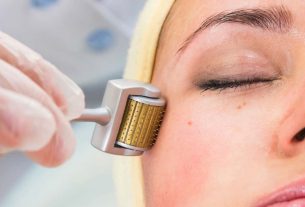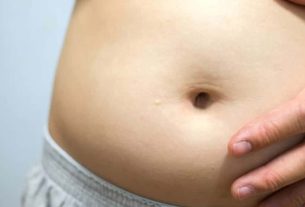The last menstruation is nothing more than menopause, so feared by women and which marks the end of a woman’s fertile period.
Just like the first, the last menstruation marks an important moment in every woman’s life. While the first menstruation, which occurs during puberty, marks the beginning of a woman’s fertile period, the last one marks the end of it. However, this change, although natural, brings with it some changes in the woman’s body, which can cause a little fear and a lot of doubts.
The last menstruation consolidates menopause, so feared by many women. It is a biological process in the body, which all women are subject to and is not a problem, despite being accompanied by some not very pleasant symptoms. At this stage, the woman begins to experience sensations such as hot flashes, lack of libido, mood changes, among others.
Fortunately, these are temporary symptoms that can be alleviated with specific treatments and care that aim to offer a full and healthy life after the end of the fertile period.
Therefore, today we will talk more about the last period, how it happens, the main symptoms that indicate its arrival and, of course, what to do to alleviate them.
Last menstruation

The last menstruation is nothing more than the famous menopause. It is a natural process in the body that marks the end of a woman’s fertile period and occurs around the age of 50, which may be earlier, called early menopause, or later in some cases.
To understand what this means in practice, we need to understand how the female organism works. Starting with the eggs, which are produced in the follicles, which are the germ cells of the ovaries, and which are present from birth. Therefore, when a girl is born, she already has an average of 1 to 2 million of these follicles, which are lost throughout her life, with each menstrual cycle.
So, when these follicles finally run out, the woman will no longer be able to produce new eggs, consequently there will be a hormonal drop and the end of her reproductive phase, marked by the last menstruation.
Therefore, at the end of this process, hormone levels drop drastically. So, before the last menstruation, a woman’s body begins to show signs that menopause is approaching. This period that occurs before the last menstruation is what we call climacteric.
Climacteric and menopause

Menopause is a fact, all women will go through it. However, it is not always easy to predict when this event is approaching. Remembering that menopause is the last menstruation, which occurs after the definitive end of menstrual periods. It can be natural or induced by surgery or drug treatments.
So, in technical terms, it is only considered menopause after a period of 12 consecutive months without menstruating. Therefore, the period before this event is what we call climacteric, which is nothing more than the physiological transition phase that marks the end of a woman’s reproductive life.
Thus, the climacteric corresponds to this entire transition between the reproductive period and the non-productive period, until the last menstruation. While menopause occurs around the age of 50 on average, menopause can take years, starting around age 40 and lasting until age 65.
At this stage, the woman begins to feel changes in her body, which indicate that menopause is approaching. There is a decrease in ovarian functions, which causes menstrual cycles to become irregular, until they cease completely.
Main signs of the arrival of menopause

In addition, other symptoms and signs appear in women, characterizing the climacteric, indicating that menopause is approaching. The main ones are:
Irregular menstruation
The first and main sign that indicates the approach of menopause is irregular menstruation. This way, it may be that she doesn’t come one month and returns the next, or she doesn’t come for a few months or even menstruates twice in the same month. This happens due to low hormone levels that prevent the uterus from preparing to receive a pregnancy, which directly influences menstruation.
Heat waves
Frequent hot flashes are another factor frequently reported by women at this stage. They appear suddenly, causing hot flashes, which mainly affect the upper part of the torso, neck and face. Furthermore, the skin may become red and the woman may experience excessive sweating due to the intensity of the heat. However, this sensation is quick, lasting a few minutes.
Mood changes
Another common factor at this stage are sudden changes in mood, similar to PMS. This happens due to the hormones responsible for the functioning of the nervous system, which are low during menopause. Therefore, it is common to feel irritability, melancholy and anxiety without any apparent explanation.
Decreased libido and other urogenital changes
At this stage, it is common for women to present some urogenital changes. Among the most common we can mention the decrease in libido, as well as vaginal dryness, urinary incontinence and infections in the bladder and urethra more frequently. In addition to difficulties emptying the bladder and pain during sexual intercourse.
Sleeping problems
The hormone estrogen is related to the regulation of a woman’s sleep, and with its decrease during the menopause phase, it is common for women to have difficulty sleeping. Furthermore, heat waves can interfere with this, as they can also occur at night, affecting rest time. In this particular case, if the woman experiences constant problems sleeping, the recommendation is to see a doctor to treat the condition, in order to prevent insomnia from becoming chronic.
Treatments

So, if you experience one or more of these symptoms, the ideal is to see a gynecologist to assess the situation, and then find the best way to deal with and alleviate the symptoms. One good thing is that these symptoms are generally temporary and can be alleviated by hormonal therapies.
However, if hormone replacement therapy is used, it must be recommended by a doctor, after a complete assessment, based on the patient’s health history and the functioning of her body.
Furthermore, a healthy routine, including a balanced diet, regular physical activity and healthy habits, such as not smoking and not abusing alcoholic beverages, also help to minimize unpleasant symptoms.
Other recommendations include practicing pleasurable activities, such as dancing, walking, swimming and other activities that improve mood and health. Wearing cool clothes, opting for ventilated places and eating lighter meals also help reduce the heat.
However, it is important to emphasize that the last menstruation can be somewhat challenging and even cause a certain fear. But, despite the uncomfortable symptoms, your quality of life does not need to be compromised by this. Both menopause and climacteric are not diseases, far from it, they are just biological processes that are part of the life cycle. So, in any case, it is important to take care of your physical and mental health to face the challenges that come with them.
Anyway, what did you think of this article? In fact, take the opportunity to also check out 8 natural ways to treat menopause symptoms.
Sources: Medley Unimed Clue Virtual Health Library
Images: Women’s Health The Qualicorp Role Live Well Drauzio

Sign up for our newsletter and stay up to date with exclusive news
that can transform your routine!
Warning: Undefined array key "title" in /home/storelat/public_html/wp-content/plugins/link-whisper-premium/templates/frontend/related-posts.php on line 12
Warning: Undefined array key "title_tag" in /home/storelat/public_html/wp-content/plugins/link-whisper-premium/templates/frontend/related-posts.php on line 13




